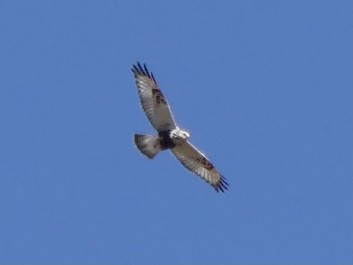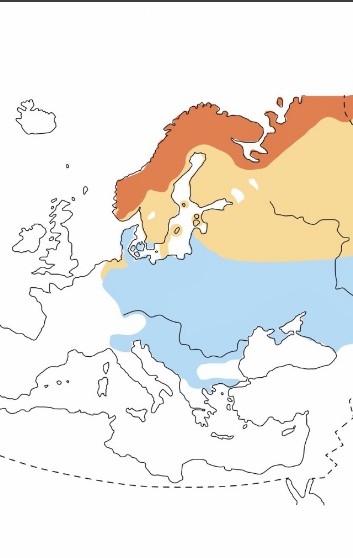Rough-legged Buzzard: First Arran Record in 47 Years
Reports


The highly variable plumage of the familiar Common Buzzard on Arran makes the identification of Rough-legged Buzzard a challenge. Pale Common Buzzards occur on Arran and can perform incredible Rough-legged Buzzard look-alike acts. That said, a classic juvenile Rough-legged Buzzard is a striking bird. Features include a bright white tail contrasting with the black terminal band, white head and breast contrasting with the very dark belly and the solid black carpal patches on the underwing. All features were well captured by Rachel Dobson in these amazing photographs taken on Sunday 25 April by the Ross Road near Glenree. The Clyde Rarities Committee had no hesitation in confirming that this was a juvenile Rough-legged Buzzard.
With a complete circumpolar distribution, Rough-legged Buzzard breeds across the tundra and taiga of North America and Eurasia, migrating south for the winter. Generally speaking, Rough-legged Buzzard is a rare winter visitor and passage migrant to Britain with records mainly occurring in the east of the country. The last Arran record was in the winter of 1974. That year there was a very large influx of birds to the UK with up to 250 reports. That was exceptional. In contrast, between 2012 and 2017 there was less than thirty UK records. When there is a good lemming and vole year in Fennoscandia, this triggers a bumper breeding season, resulting in large numbers of dispersing juveniles.
That Sunday afternoon in April, Rachel Dobson and Chris Southall, bird ringers, noticed a buzzard being mobbed by two Raven. Chris commented on the unusual white tail. Meanwhile Rachel is trying to get her camera out of her bag. The bird is moving away. Almost incredibly Rachel managed to photograph the bird.
Rachel’s own words give a measure of the excitement “Trying to snap photos of the bird before it flew away, I have never been more stressed trying to focus my camera than I was today! Examining these photos in closer detail on the back of the camera, the distinctive plumage screamed out to us that this was indeed a very special sighting, and a first for both of us. After checking the Arran Bird Report, we were excited to learn that this was the first one recorded on Arran for almost 47 years!
What an incredible record. Me and Chris were so lucky to be in the right place at the right time. I am glad that he was there to identify it as something special to photograph.”
It was a never to be forgotten day.
